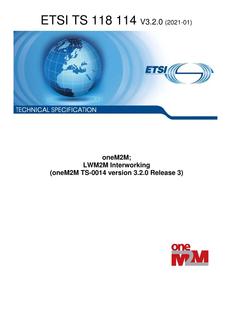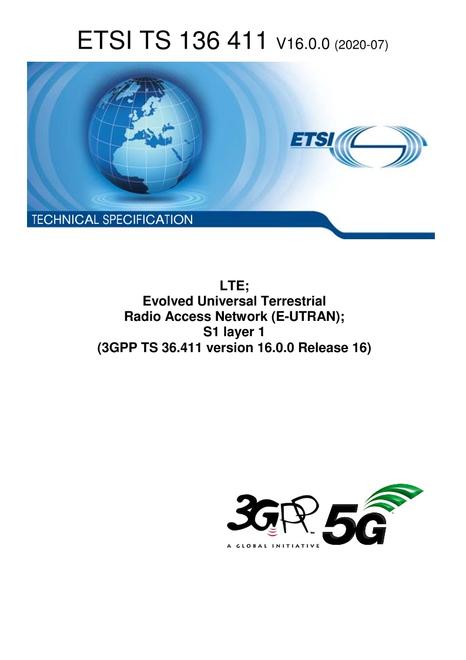-
-
Available Formats
- Availability
- Priced From ( in USD )
-
Available Formats
-
- Immediate download
- $27.25
- Add to Cart
-
- Printed Edition
- Ships in 1-2 business days
- $27.25
- Add to Cart
Customers Who Bought This Also Bought
-

ETSI ETR 215
Priced From $17.34 -

ETSI TS 118 114
Priced From $27.25 -

ETSI TS 136 411
Priced From $27.25 -

ETSI TR 125 963
Priced From $27.25
About This Item
Full Description
The GAL is an interface between data and control planes for exchanging data regarding the power status of a device. This interface if specifically conceived to hide the implementation details of energy-saving approaches, as well to provide methodologies for interactions between heterogeneous "green" capabilities and Hardware (HW) technologies, on one hand, and control and monitoring frameworks, on the other hand. With "green" capabilities, we refer to any type of mechanisms that implement appropriate optimization policies aimed at reducing the power consumption of a resource. Indeed, this interface provides flexible access to the power management capabilities of the future energy aware telecommunication fixed network nodes to effectively adapt the energy consumption of the network nodes with respect to the load variations.
By means of the GAL, control applications will be allowed to get information on how many power management settings are available at the data-plane, and on the potential effect of using such settings. The other way round, control applications will be capable of setting a certain power management configuration to the device data-plane. It is worth nothing that, in order to provide the information needed by control applications to reduce the energy consumption while meeting the Quality of Service (QoS) constraints, the GAL explicitly represents the impact on network performance when different power management settings are applied.
The main objective of the GAL is to standardize the interface between the Network Control Policies (NCPs, for the energy efficiency purpose) and the power modulation capabilities of network devices. There are three key aspects that have to be addressed by the GAL:
- to make explicit the trade-off between consumption and network performance;
- to map the consumption of hardware blocks with virtual/logical network resources; and
- to hide the details/complexity of internal power modulation mechanisms.
- the definition of the GAL general architecture;
- the definition of the interoperable interface (GSI) between the energy-aware control processes (NCPs and LCPs - Local Control Policies) and the power management capabilities of the fixed network devices;
- the definition of the EASes describing the different configurations and corresponding performance with respect to the energy consumption of the devices.





